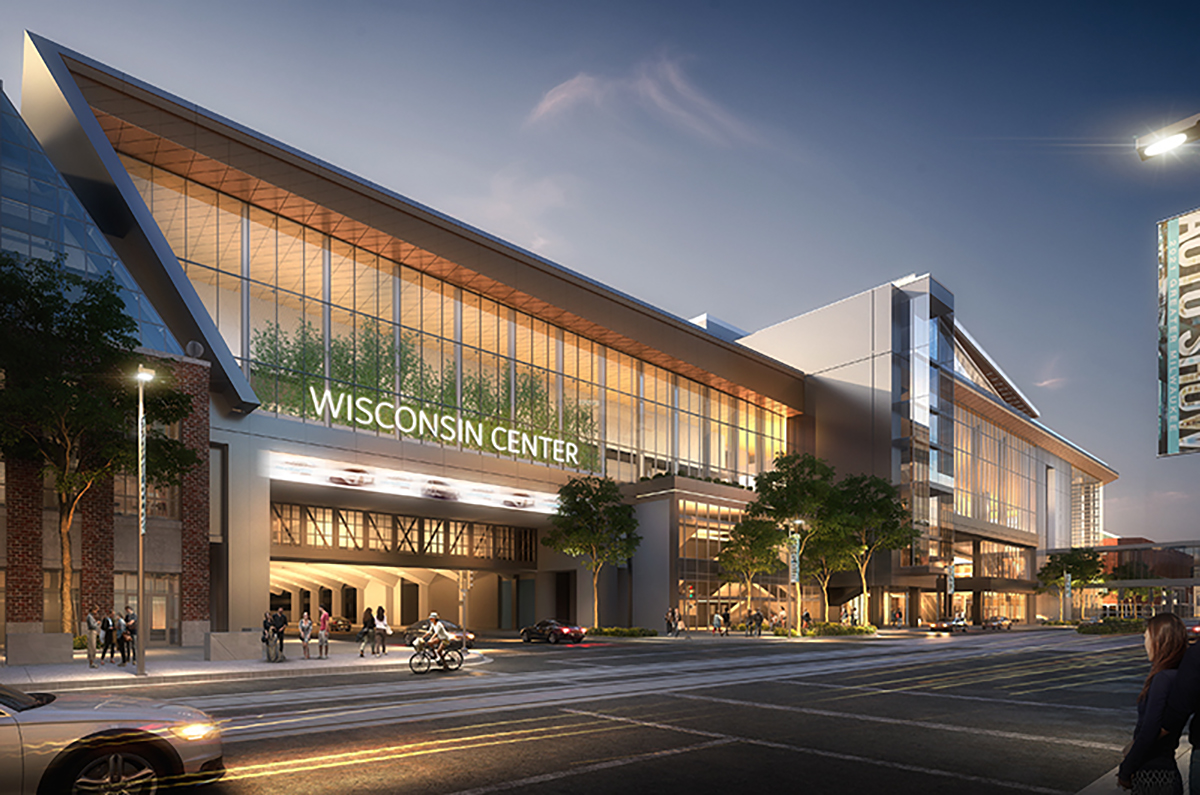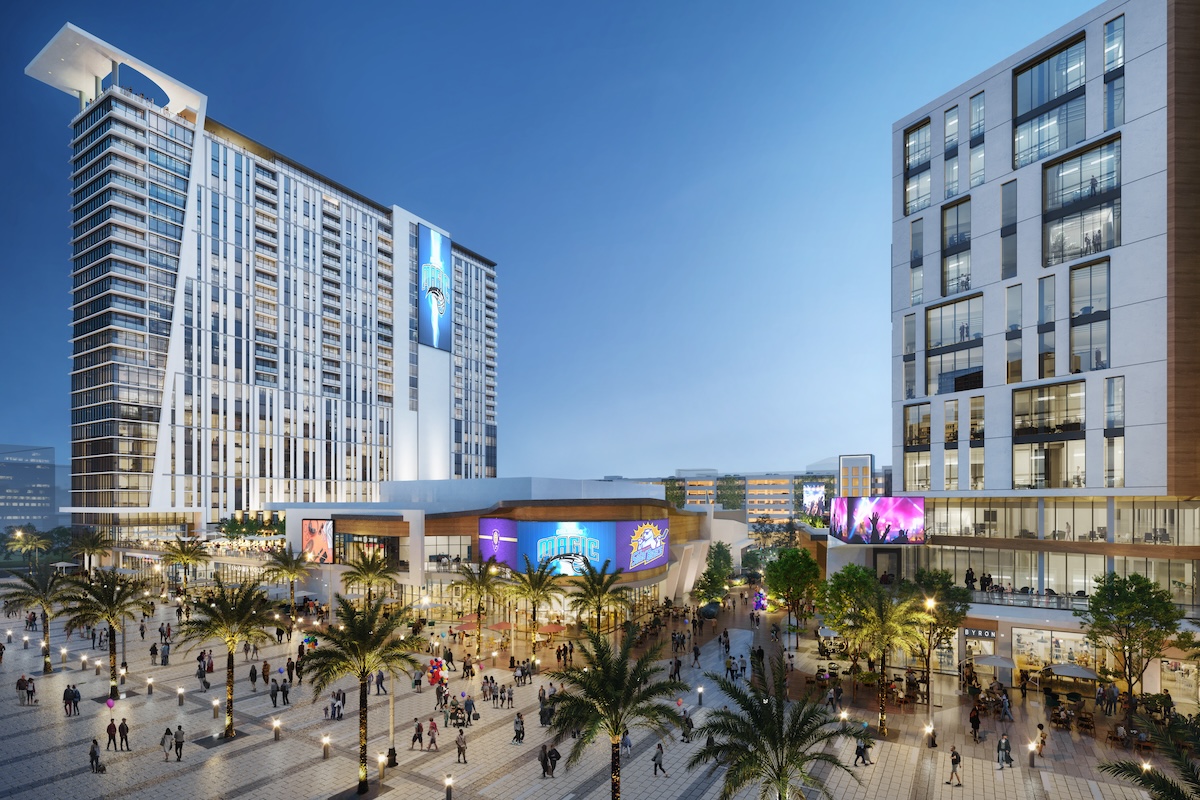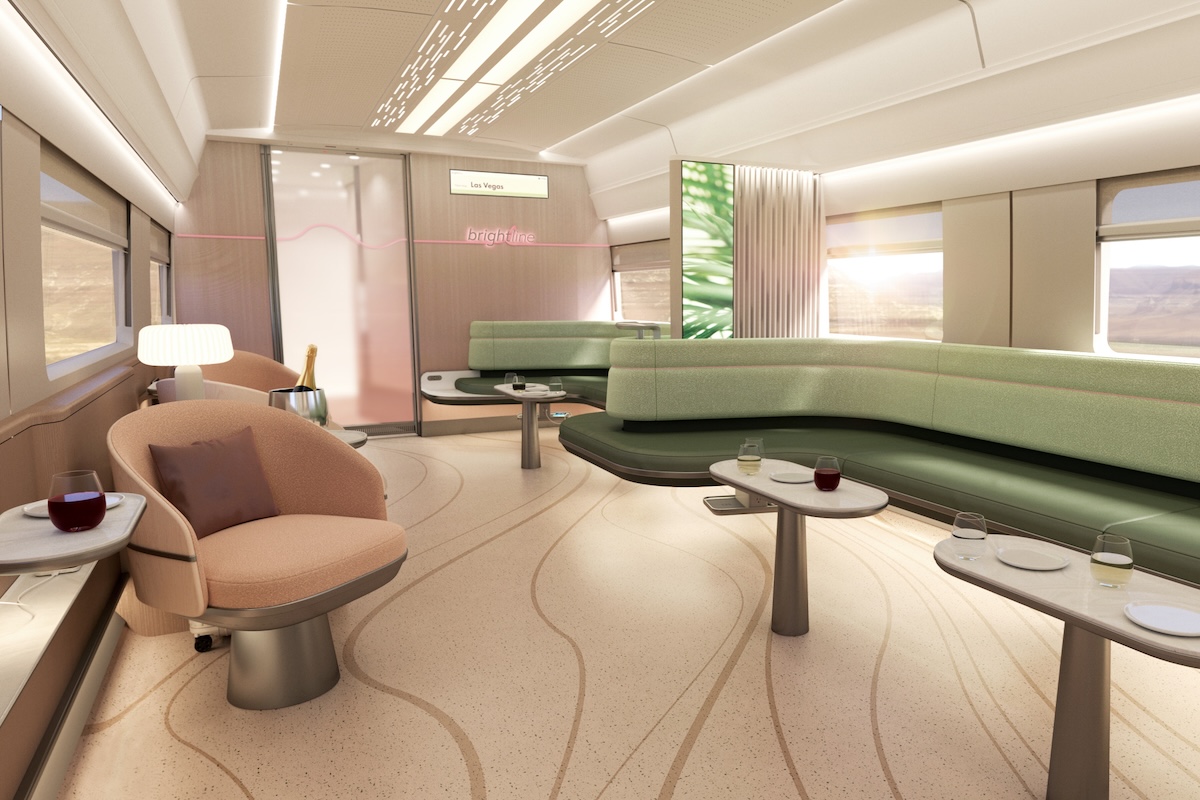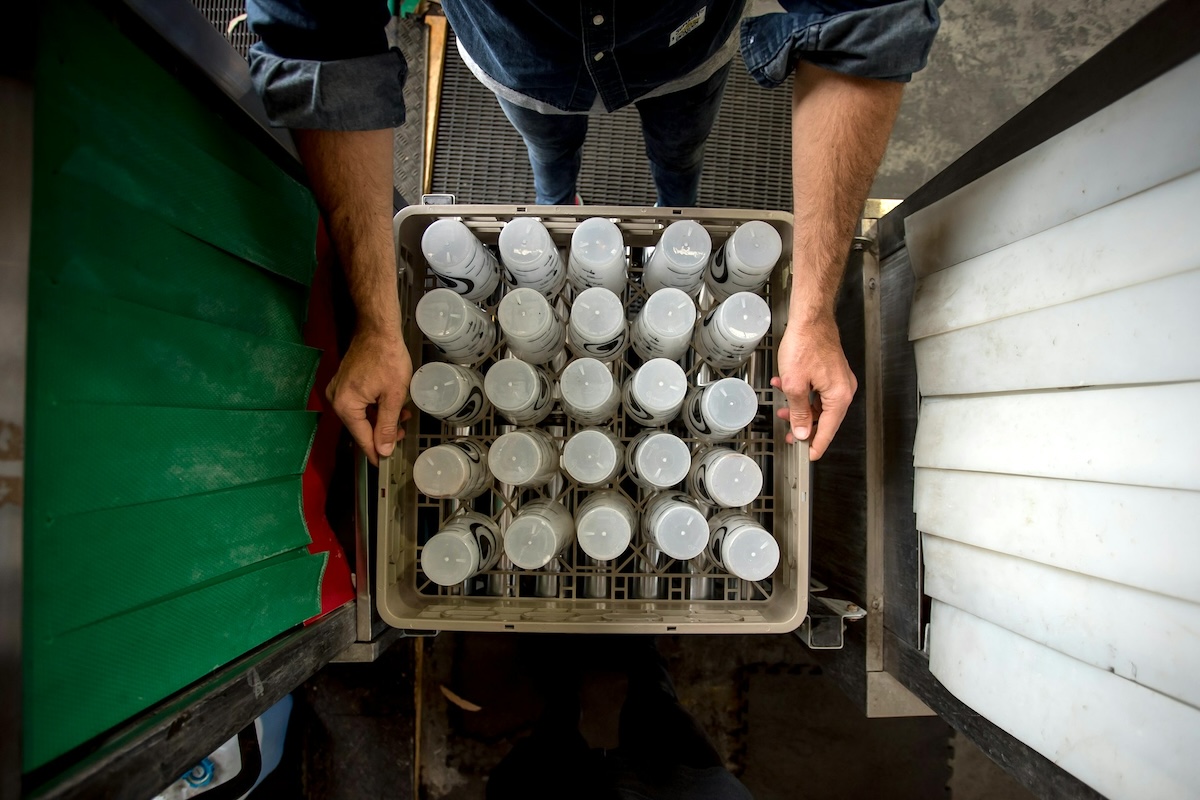Skift Take
Milwaukee is building on its strengths as a top meeting destination through a massive extension of its Wisconsin Center. Find out what the updates mean for event planners, and how attendees can take advantage of the city's many attractions after the official agenda wraps up.
Milwaukee is stepping into the spotlight as a prime location for meetings and conventions, offering a blend of big-city experiences and small-town hospitality. At the heart of its appeal is its Wisconsin Center, which is undergoing an expansion slated for 2024. These updates will add even more flexibility for planners, who already benefit from its accessibility, affordability, and sustainability initiatives. As another advantage of the city’s compact size, Milwaukee Mitchell International Airport is conveniently located 10 minutes from downtown and the Wisconsin Center.
Named one of National Geographic’s 25 Best Places in the World to Visit for 2023, Milwaukee’s distinctive attractions also lure business travelers looking to extend their stay when the meeting packs up.
5 Ways to Benefit From the Wisconsin Center Expansion
As Milwaukee’s profile continues to rise, the city is focusing on its capabilities as a host for meetings, trade shows, and conventions. In the spotlight is the expansion of its Wisconsin Center, which will provide planners with added value in five key ways.
1. Added Space & Facilities Build on Center’s Top Selling Points
The Wisconsin Center expansion provides the ability to host multiple events simultaneously, which benefits groups looking for more flexibility scheduling their meetings.
Expansion highlights include:
- Total space will be brought to 1.3 million square feet
- 300,000 contiguous square feet of exposition space
- 24 new meeting rooms for a total of 52
- 400+ indoor parking spaces
- 6 new loading docks for a total of 22
- Fourth-floor rooftop ballroom with space for 2,000 guests and city views
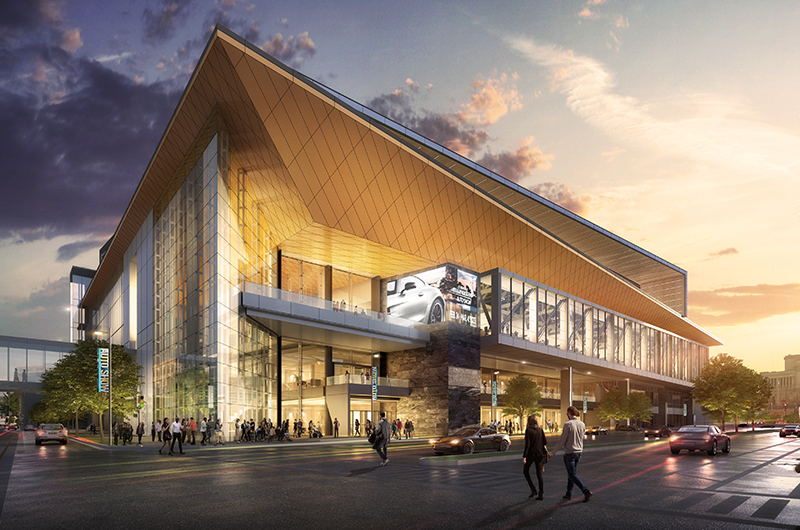

2. More Flexibility for Meeting & Event Planners
The addition of space will offer planners the flexibility to book larger meetings and exhibitions. Larger meetings will be able to take advantage of the expansion’s new features, which include the following:
- Streamlined Loading: The twenty-two loading docks are better able to accommodate overlapping load-in times; elevators can each hold a car.
- Adaptable Catering: The additional kitchen means events of all sizes can operate better simultaneously.
- Outdoor/Indoor Space: The fourth-floor rooftop ballroom will also offer a massive rooftop terrace allowing events to flow from indoors to outdoors while providing stunning skyline views.
In addition to these inclusive and flexible spaces, the Wisconsin Center team has recognized the growing need for workspaces that fuel conversations and spark creative synergies by introducing a collaboration stairway, which offers an alternative space for their guests to relax or work outside of the core meeting rooms.
“These are the features planners care most about and we’re thrilled to have already booked plenty of business because planners are excited about the added space and new features,” said Megan Seppmann, vice president of sales for the Wisconsin Center District. “We also know planners will feel well-cared for with the center’s new amenities.”
The new expansion adds to the convention campus’ long-established set of alternative venues, which include UW-Milwaukee Panther Arena and Miller High Life Theatre, making for a well-rounded experience. “The team that operates the venues within the Wisconsin Center District is truly experience-obsessed. And they’re also ready to adapt to changing circumstances at a moment’s notice to deliver the best possible event for their guests,” said Seppmann.
3. Alignment With DEI Values
Diversity, equity, and inclusion (DEI) are part of the fabric of Milwaukee. “Milwaukee is a minority-majority city, and benefits every day from the many kinds of ethnic and immigrant groups that live here,” said Marty Brooks, president and CEO of the Wisconsin Center District. In alignment with the city’s values, Wisconsin Center has incorporated a variety of integral DEI initiatives into every aspect of its expansion, from the design to the construction. “The building of the expansion itself has kept inclusion and equity at the forefront,” said Brooks
The center’s DEI-focused design elements include gender neutral bathrooms, a nursing mother’s room, and quiet rooms. To help sustain and reflect the city’s cultural richness, the center is also installing a public art display telling the story of Milwaukee. When it comes to the transportation side of accessibility, the Wisconsin Center is just three blocks away from Intermodal Station, and there’s a Bublr Bikes bike share station (with adaptive bikes) directly outside the entrance.
For the Wisconsin Center, DEI values need to be reflected not just in client-facing services, but among those working behind the scenes. That’s way the expansion project created its own DEI goals for construction suppliers, including:
- 31 percent Disadvantaged Business Enterprise commitment, with at least 25 percent minority-owned businesses, 5 percent women-owned businesses, and 1 percent disabled veteran-owned businesses
Additionally, the center has also created a Residential Preference Program (RPP), which mandates that at least 40 percent of on-site construction labor hours will be performed by trade workers residing in the city of Milwaukee.
“While there is still a year left until the project is complete, the team is well on its way to meeting these goals,” said Brooks.
4. Sustainability-Focused Design
Sustainability is at the forefront of the Wisconsin Center expansion. Architecture firms designed the new convention venue “with the vision to create a space that incorporates industry best practices and connects the Wisconsin Center to the greater Milwaukee community,” said Brooks. A sampling of those initiatives include:
- Application for LEED Silver certification
- A solar roof
- An underground storm trap
- LED lighting in the front and back of house
- Ceramic fritted glass to increase energy efficiency and prevent bird collisions
- A food waste digester, which will be installed into the existing food composting program
- Green building materials, including recycled steel for 90 percent of new construction needs
Further, the Wisconsin Center’s green design builds on citywide sustainability efforts. Milwaukee is a global leader in water technology, with the local industry working alongside the education community to develop best practices for freshwater conservation. Large public-private efforts have protected and restored waterways. Thanks to these efforts, the three rivers that meet in Milwaukee and the lakefront are all safe and habitable enough for recreation and a resurgence of wildlife (a real testament to strategic efforts in a formerly heavy industrial city).
In the same spirit of preservation, the city also has an exceptional track record of adapting historic buildings for new uses.
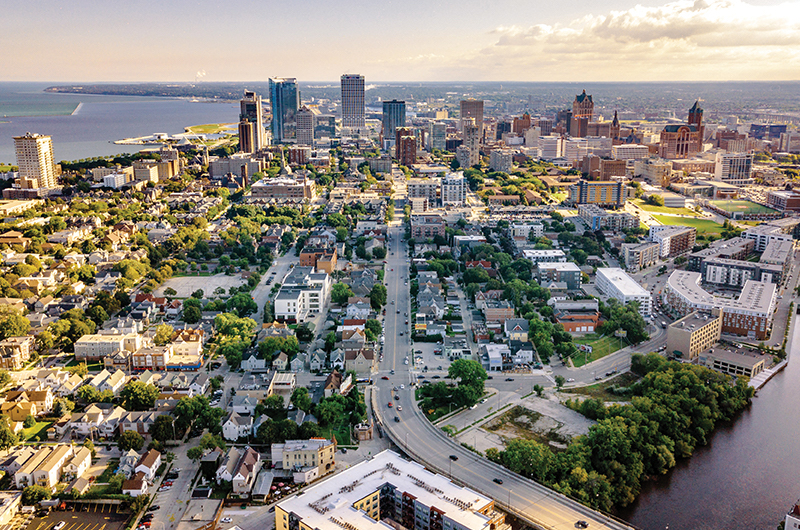

5. Economic Boost Means a Better City Experience
The Wisconsin Center expansion is also benefiting the city itself. Once completed, the new convention center is projected to attract an additional 100,000 out-of-state visitors annually, which is estimated to stimulate at least $12.6 billion in total spending in the state over a 30-year period.
“A thriving convention center means the businesses that surround it thrive, too, which ultimately means better and more robust visitor experiences,” said Brooks.
Milwaukee Highlights at a Glance
While the Wisconsin Center’s upgrades are undeniably a major draw for event professionals, the city also has plenty to offer outside the conference hall. Milwaukee, dubbed Brew City for its notable history as home to historic breweries, is now making headlines for its urban appeal at affordable prices. The city boasts the gamut of top-name and unique hotels downtown, all within walking distance to the Wisconsin Center, as well as a wealth of accessible attractions, restaurants, and nightlife.
“From a ‘flying’ art museum to kayaking through downtown, or from taking in the league-frontrunner Milwaukee Bucks to watching A-list music acts at Summerfest, the leisure experience in Milwaukee takes your breath away,” said Josh Albrecht, vice president of marketing and communications for VISIT Milwaukee.
Walkable Hotel Options
The Wisconsin Center is connected by skywalk to more than 1,300 hotel rooms at the Hilton Milwaukee City Center, the Hyatt Regency Milwaukee, and the SpringHill Suites Milwaukee. Other options include:
- Drury Plaza Hotel Milwaukee Downtown
- Saint Kate – The Arts Hotel
- The Pfister Hotel
- Marriott Autograph Collection Hotel – the Trade (opening summer 2023)
Offsite Meeting Venues
Milwaukee is home to an enticing variety of offsite meeting venues:
- Milwaukee Museum of Art
- Harley Davidson Museum
- Best Place at the Historic Pabst Brewery
- Fiserv Forum
- Milwaukee Public Museum
Sustainable Venues
Milwaukee features a host of sustainable venues for groups:
- LEED Gold-certified Potawatomi Casino Hotel
- Schlitz Audubon Nature Center
- Urban Ecology Center
Post-Meeting Exploration
The city boast plenty of attractions and activities to keep attendees busy after the official program closes:
- Lake Michigan boat rides and white sand beaches
- Exploring RiverWalk (and photo-op with Bronze Fonz)
- Milwaukee Public Market
- Ghost tours and other walking tours
- Old World Third Street Entertainment District
- America’s Black Holocaust Museum (one of the New York Times’ “52 places” in 2022)
- The National Bobblehead Museum & Hall of Fame
- Giannis Antetokounmpo mural on Wisconsin Avenue in the heart of downtown
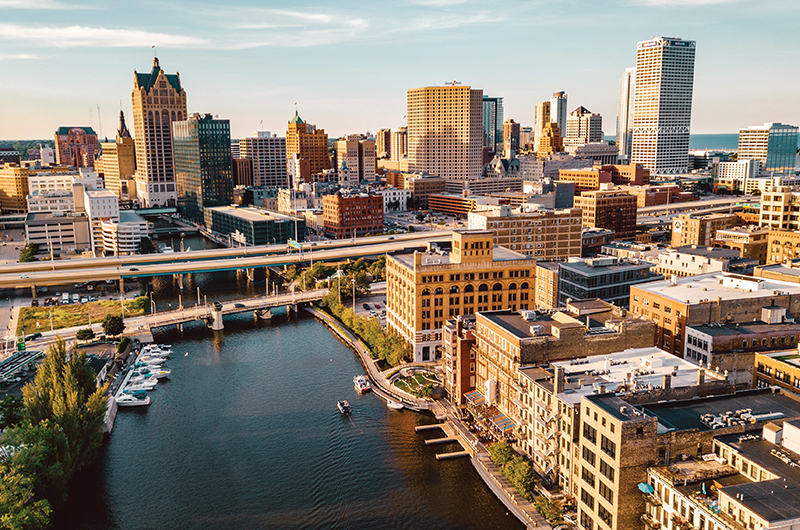

Fine Dining
Milwaukee’s culinary prowess is being recognized, including a growing list of award-winning restaurants:
- The Diplomat: Chef Dane Baldwin (won the James Beard Award for best chef in the Midwest in 2022)
- Odd Duck
- Sanford Restaurant
- Lake Park Bistro
- Ardent
Lounges, Bar, and Breweries
Milwaukee is home to more than 70 breweries and a variety of nightlife options:
- Pabst Theater
- Cocktail bars: The Outsider rooftop bar, Goodkind and Bryant’s Cocktail Lounge
- Breweries: Lakefront Brewery and Miller Brewery’s caves
Summer Festivals
The city draws large crowds every year for its enviable list of major festivals, including:
- Summerfest (a $25 daily admission ticket provides access 11 of the festival’s 12 stages)
- Polish Fest
- Mexican Fiesta
- Irish Fest
- Black Arts Fest MKE
- Pride Fest
- Festa Italiana
- Bastille Days
- Juneteenth (the longest continuously running Juneteenth Day celebration in the country)
Want to learn more about all that the city has to offer? To submit an RFP for a future event at the Wisconsin Center, contact VISIT Milwaukee.
Did You Know?
A World Leader in Live Entertainment: Milwaukee’s Summerfest, which debuted in 1968, is the largest music festival in the world, spanning three weekends and featuring 12 stages. Music genres run the gamut from folk to funk, and the festival’s long history of top-tier acts has featured a host of stars, from the Rolling Stones to Lady Gaga.
This content was created collaboratively by VISIT Milwaukee and Skift’s branded content studio, SkiftX.

